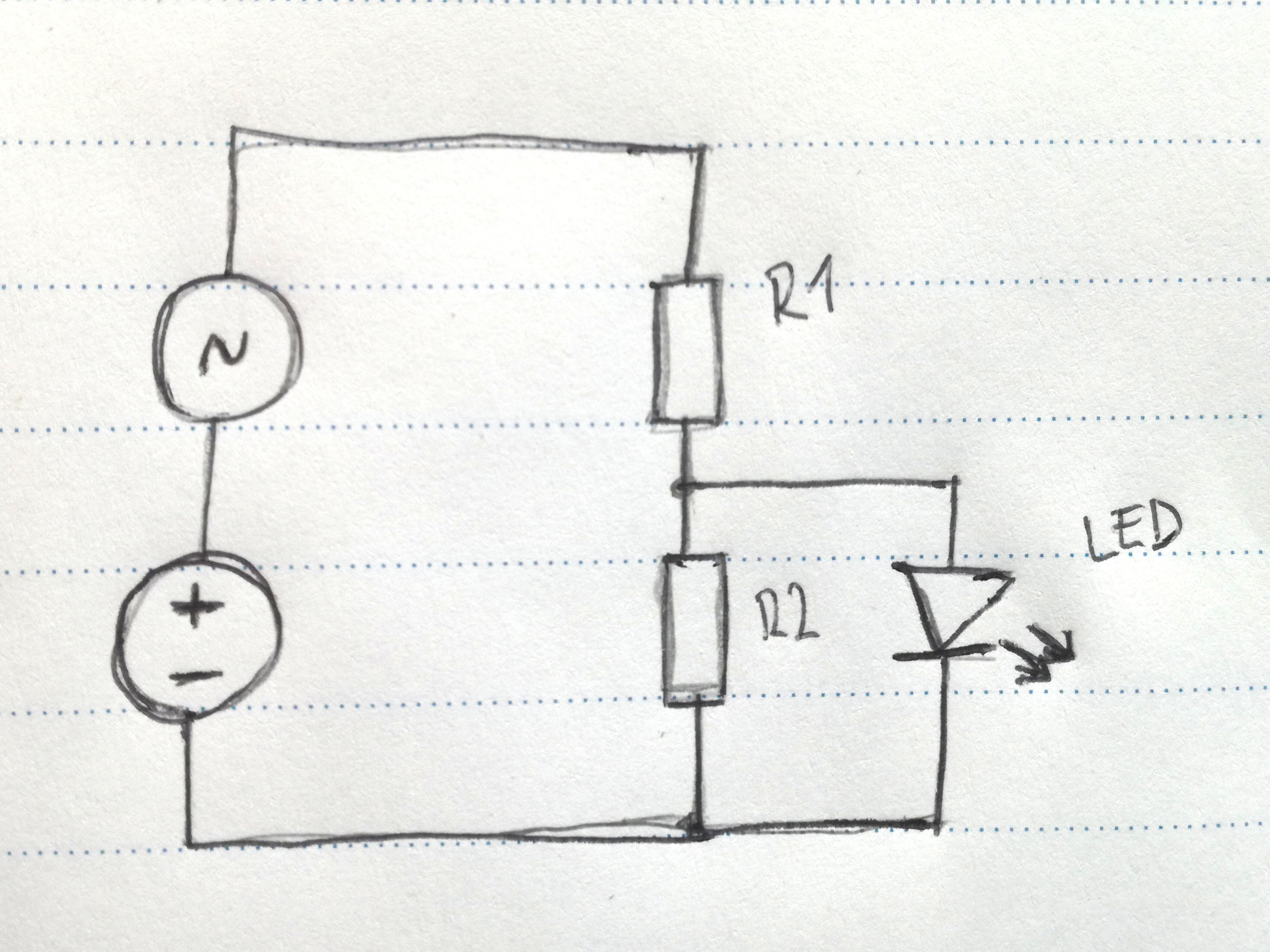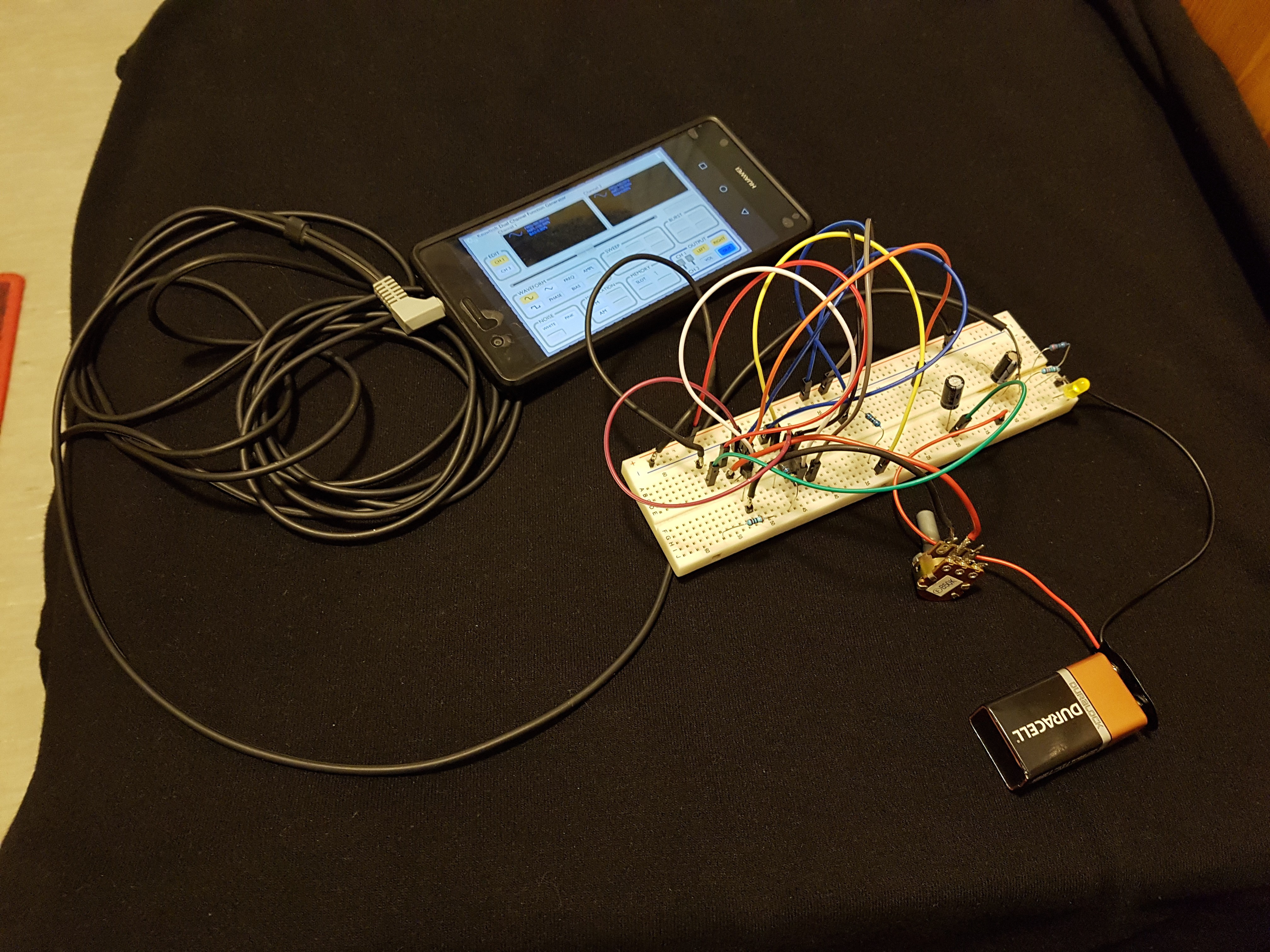After almost giving up on the analog version of this project, I decided to ask my friend Grega for help. It turned out to be a good idea, since we've come up with a simple proof of concept that works well.
I thought this should be simple and it is. In theory, if you add sine wave signal to a constant voltage you should get the result I was looking for. Right?

We got the sine wave output from a smartphone function generator app, via headphones output. I would never think if it by myself- and it works great! I don't know what is the voltage of the output of my smartphone, but I assume it's around 1V peak to peak. That said, I can play with different voltage divider values (to get the constant DC) and see what works best. I am testing this with a 9V battery, but will probably use coin cell battery later.
I'm using a 0.5Hz sine wave, 100% amplitude (how can I measure this?).
Here's the screenshot of my function generator (application):



White LED:
For white LED, I set the voltage divider values to output 2.6V (with load). Without the load - with only a multimeter attached across R2- I got 2.9V.
R1= 10k
R2= 4k
Vout = 2.9V
Vled= 2.6V
Yellow LED:
R1= 10k
R2= 3.3k
Vout = 2.3V
Vled = 1.8V
Red LED:
* It's hard to focus the camera in dark, red color doesn't help either...*
R1 = 10k
R2 = 2.7k
Vout = 1.9V
Vled = 1.7V
Conclusion
So this works! I'm happy with the results, as I wanted a slow and subtle "waving" of LED brightness. Now I "only" have to figure out, how to make that sine wave thing somehow.
 jurc192
jurc192
Discussions
Become a Hackaday.io Member
Create an account to leave a comment. Already have an account? Log In.